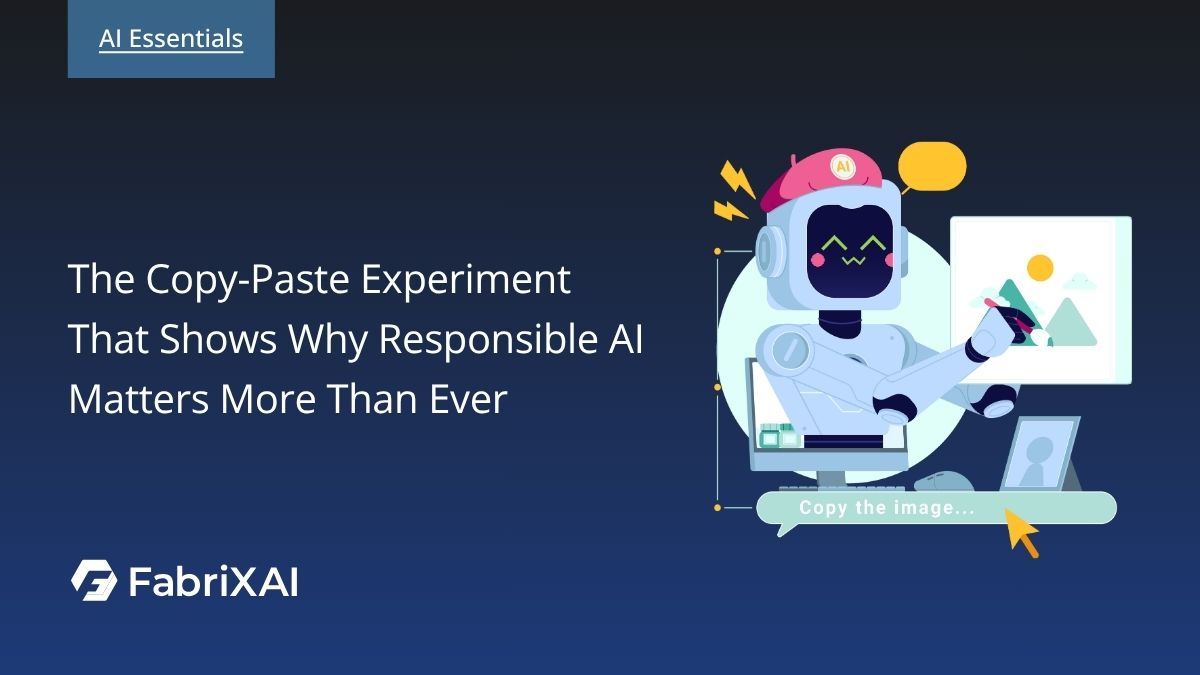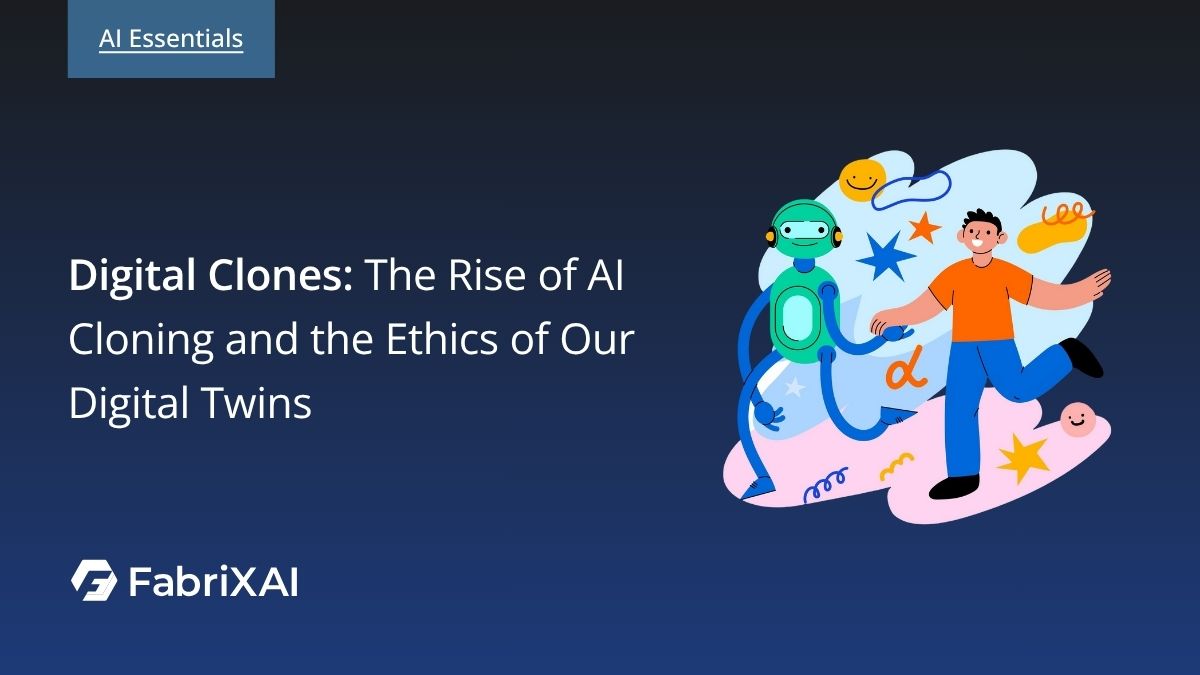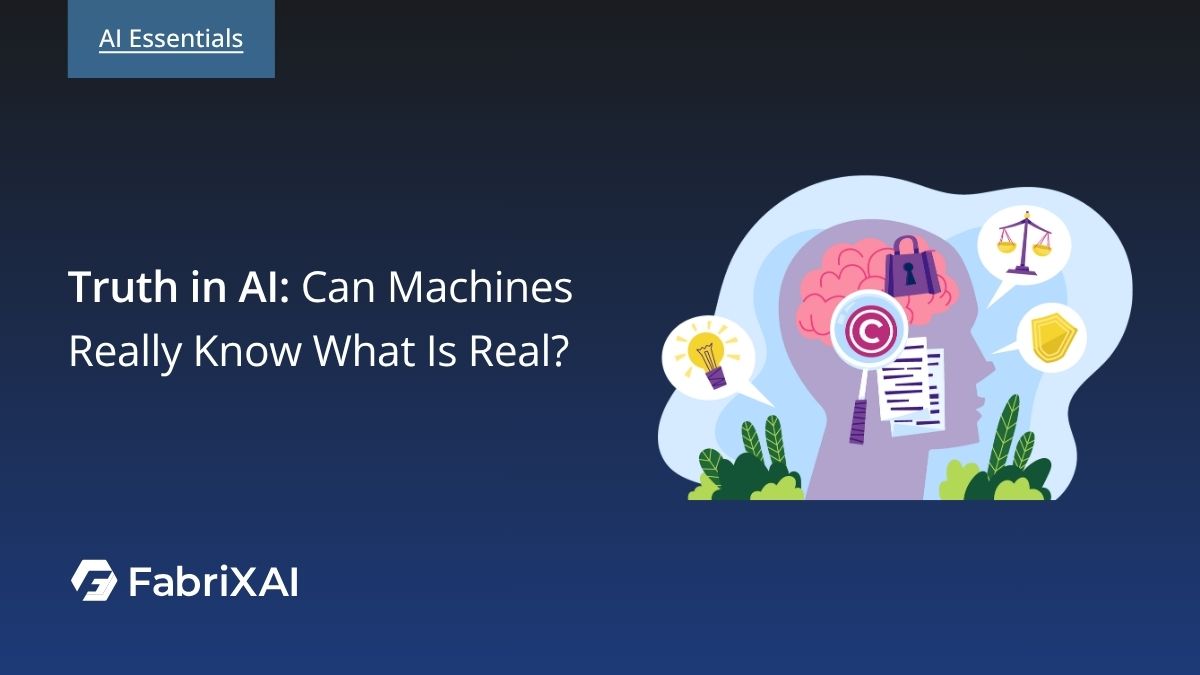AI Hallucination: When Intelligence Creates Its Own Reality

Artificial intelligence is often praised for its apparent brilliance: it writes essays, summarizes complex reports, and can explain topics in a way that feels almost human. Underneath that fluency, however, lies a strange and sometimes unsettling behavior called AI hallucination.
If you are looking for a practical, implementation focused guide to reducing hallucinations in real systems, you may want to start with our article "The AI Problem People Keep Ignoring: Understanding and Preventing AI Hallucinations".
This companion piece goes deeper. It asks a different set of questions:
- What does hallucination reveal about how AI actually "thinks"?
- Why are humans so easily convinced by confident but wrong answers?
- What does this mean for truth, trust, and the future of AI assisted decision making?
What AI Hallucination Really Is (Beneath the Buzzword)
At a surface level, hallucination is easy to describe:
An AI hallucination occurs when a model generates content that is grammatically correct and sounds plausible, but is factually false and not grounded in any reliable source.
Typical examples include:
- A chatbot inventing a scientific paper or citation.
- A model describing a product feature, company policy, or API endpoint that does not exist.
- An assistant confidently narrating a historical event that never happened.
These are not traditional software bugs. The system is doing exactly what it was designed to do: predict the next most likely word based on patterns in its training data.
From the model’s point of view, a fluent, plausible sentence is a success, even if the content is wrong. That is the core tension that gives rise to hallucination.
Inside the Model: How a Synthetic “Reality” Is Built
Large Language Models (LLMs) like ChatGPT, Gemini, and Claude are trained on billions or trillions of tokens of text. During training, they learn the statistical relationships between words, phrases, and structures.
There are a few important consequences of this approach:
Patterns, Not Facts
The model does not store a structured database of facts. It stores a compressed representation of patterns. When asked a question, it searches in that high dimensional space for a continuation that:
- Is internally coherent,
- Fits the style of the prompt, and
- Has high probability given the training distribution.
Nowhere in that process is there a built in notion of "truth". The model has no sensor data, no lived experience, and no direct connection to the physical world. Its "reality" is entirely linguistic.
Gap Filling as a Feature
When training data is incomplete, outdated, or silent on a topic, the model does not say "I do not know" by default. It does what it always does: extrapolate from patterns.
That gap filling behavior is incredibly useful for tasks like creative writing or brainstorming. It is also exactly what we experience as hallucination in factual or high stakes contexts.
Optimized for Fluency, Not Accuracy
Modern models are further refined with techniques such as Reinforcement Learning from Human Feedback (RLHF). Humans tend to reward:
- Answers that are clear and confident,
- Explanations that sound helpful and complete,
- Language that feels natural and human.
Over time, the model learns that sounding sure is often more rewarded than admitting uncertainty. That pushes it toward polished answers, even when the underlying information is shaky.
Why Humans Believe Hallucinations So Easily
If hallucinations are "just" plausible but wrong sentences, why do they cause so much trouble?
The answer has less to do with AI and more to do with us.
1. Fluency Bias
Psychology research shows that humans have a strong fluency bias:
If something is easy to read, feels familiar, and is presented confidently, we are more likely to accept it as true.
LLM outputs are built to be fluent. They are grammatically smooth, context aware, and stylistically consistent. This makes them extremely easy to read and therefore feel trustworthy.
We do not experience a hallucination as "statistical noise". We experience it as a polished explanation from a seemingly intelligent agent.
2. Anthropomorphism
We are also very good at attributing human traits to non human systems. When an AI:
- Uses first person language,
- Adapts to our tone,
- Remembers context,
we instinctively treat it as if it has beliefs, intentions, and understanding.
In reality, the model has none of these. What looks like reasoning is pattern matching at scale. Hallucinations expose that gap: the system can improvise a story without any awareness that it has invented something.
3. The Authority Effect
We are used to interfaces where structured information has already been validated: search engines, documentation, textbooks. When AI tools appear in those same contexts, we unconsciously extend this trust to them.
A chat interface that sits inside a product, on a help page, or in a financial portal looks official, so we assume its answers carry institutional authority. A hallucination inside that frame is far more dangerous than the same sentence in a casual sandbox.
What Hallucination Reveals About “Machine Intelligence”
Hallucinations are often presented as failures, but they tell us something deeper about the nature of current AI systems.
1. Prediction Without Understanding
When an AI hallucinates, it demonstrates that:
- It does not know when it does not know.
- It does not distinguish between "this came from a reliable source" and "this is a plausible guess".
- It has no internal model of truth, only an internal model of language.
In that sense, hallucination is not a glitch. It is a window into the limits of a purely predictive system.
2. Synthetic Reality vs Shared Reality
Humans build their understanding of reality by integrating:
- Sensory perception,
- Memory and experience,
- Social feedback and correction.
A language model, by contrast, builds a synthetic reality entirely from text. Its "world" is whatever appears in the training data, plus the patterns it infers between those texts.
Hallucination occurs when the model’s synthetic reality drifts away from shared reality. The output still looks coherent within its internal map, but it no longer corresponds to facts in the external world.
3. Intelligence as Emergent Behavior
It is tempting to say that hallucination proves AI is not intelligent. The truth is more nuanced.
What we call "intelligence" in current models is an emergent property of large scale pattern recognition. Hallucination simply shows that this form of intelligence:
- Is powerful at compression, analogy, and style transfer,
- Is weak at grounding and self monitoring,
- Needs additional structures around it to be reliable in factual domains.
In other words, hallucination does not invalidate AI’s capabilities, but it clearly marks their boundary.
Designing Around Hallucination: Systems, Not Just Models
Because hallucination is baked into how LLMs work, the goal is not to magically remove it from the model. The goal is to design systems that acknowledge and compensate for it.
Here are the deeper principles behind mitigation strategies. For a more applied checklist, you can jump to "The AI Problem People Keep Ignoring: Understanding and Preventing AI Hallucinations".
Ground Models in External Reality
Techniques such as Retrieval Augmented Generation (RAG) connect the model to:
- Documentation,
- Knowledge bases,
- Databases and APIs,
- Search engines.
Instead of relying only on its internal synthetic reality, the model is forced to pull in evidence from external sources. This reduces hallucination and, just as importantly, makes it easier to audit where answers came from.
Make Uncertainty Visible
A critical part of responsible AI is changing how systems express uncertainty. Helpful patterns include:
- Phrasing answers with conditional language when confidence is low.
- Explicitly saying "I do not have enough information to answer that reliably."
- Showing confidence indicators or source quality labels to users.
This is not only a UX choice. It is a way to respect the user’s role as the final decision maker.
Keep Humans in the Loop Where It Matters
In high stakes settings such as health, law, finance, or safety, AI should act as a copilot, not an autopilot.
That means:
- Humans review generated content before it is used externally.
- Domain experts remain accountable for decisions.
- The system is designed to support human judgment, not replace it.
Educate Users, Not Just Fine Tune Models
Technical mitigation is necessary but not sufficient. Long term, we need AI literacy:
- Understanding that fluency does not guarantee truth.
- Knowing when and how to verify AI generated information.
- Developing organizational norms around review, approval, and escalation.
When users understand hallucination as a structural property of the technology, they are far less likely to treat AI as an oracle.
The Future of Trust in an Age of Synthetic Answers
As AI becomes woven into search, productivity tools, learning platforms, and enterprise workflows, hallucination will not fully disappear. Instead, it will become something we learn to live with, design around, and reason about.
The key shifts are:
- From "Can we make AI always correct?" to "Can we make AI systems that fail transparently and safely?"
- From "Does the model know the truth?" to "How do we combine model capabilities with human judgment and verified data?"
- From "Can AI replace human reasoning?" to "How can AI extend human reasoning without undermining trust?"
Hallucination, viewed this way, is not just a problem to suppress. It is a reminder that truth and responsibility still belong to humans, even in an era of astonishing machine generated language.
Conclusion
AI hallucination is not a rare glitch. It is a predictable outcome of how language models generate text. By understanding why hallucination happens and why humans trust it, we can build safer systems, create better user experiences, and maintain trust as AI becomes more embedded in everyday life.
Ultimately, the boundary between prediction and truth must be managed by thoughtful system design, grounded data, and informed users.
Key Takeaways
- AI hallucination occurs when models generate fluent but false information.
- It stems from prediction patterns, not deception or intent.
- Humans trust hallucinations due to fluency bias, anthropomorphism, and authority cues.
- Hallucination highlights the limits of current AI understanding.
- Grounding, transparency, oversight, and education are essential safeguards.
Frequently Asked Questions (FAQ)
Q1. What causes AI hallucination?
AI hallucination occurs because language models predict likely word sequences rather than storing verified facts. When information is missing or ambiguous, the model fills gaps with plausible-sounding guesses based on patterns in training data.
Q2. Can hallucinations be completely eliminated?
No. Because language models rely on probabilistic prediction, hallucinations are unavoidable. They can be greatly reduced through grounding with external data, better system design, and human oversight, but not removed entirely.
Q3. How can users detect hallucinations?
Check for verifiable sources, cross-reference with trusted material, and be cautious of highly specific or overly confident claims. If an answer feels too polished or detailed, it’s worth double-checking before relying on it.
Q4. Why do people trust hallucinated answers?
Humans trust hallucinations due to fluency, confidence, and familiarity. When text is smooth and authoritative, our brains interpret it as credible. Users also unconsciously attribute human-like understanding to AI systems, which increases trust.
Q5. Which industries are most affected by hallucinations?
Healthcare, law, finance, education, and enterprise support workflows are particularly vulnerable. Incorrect information in these areas can cause legal, financial, or safety consequences, making careful verification essential.



